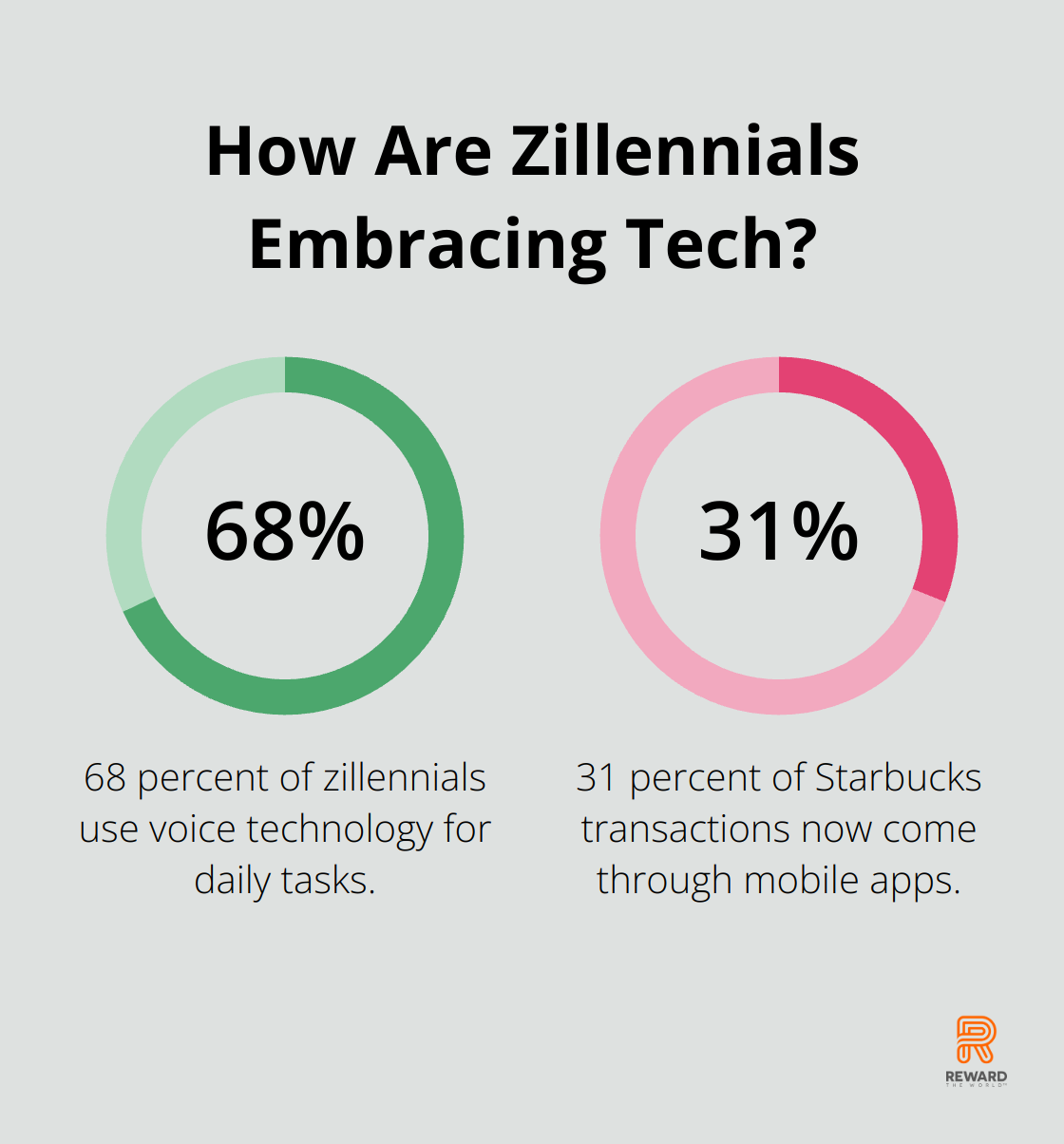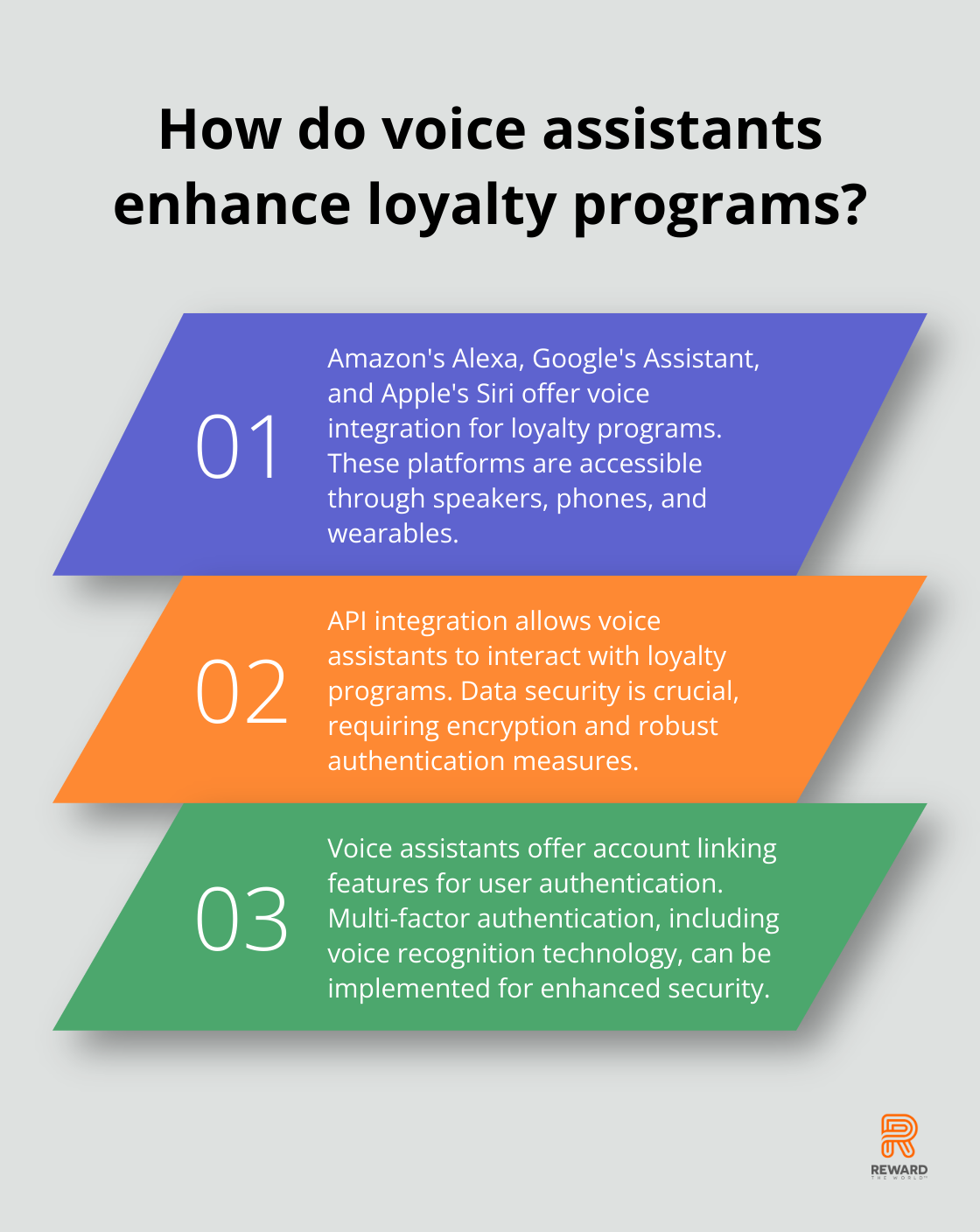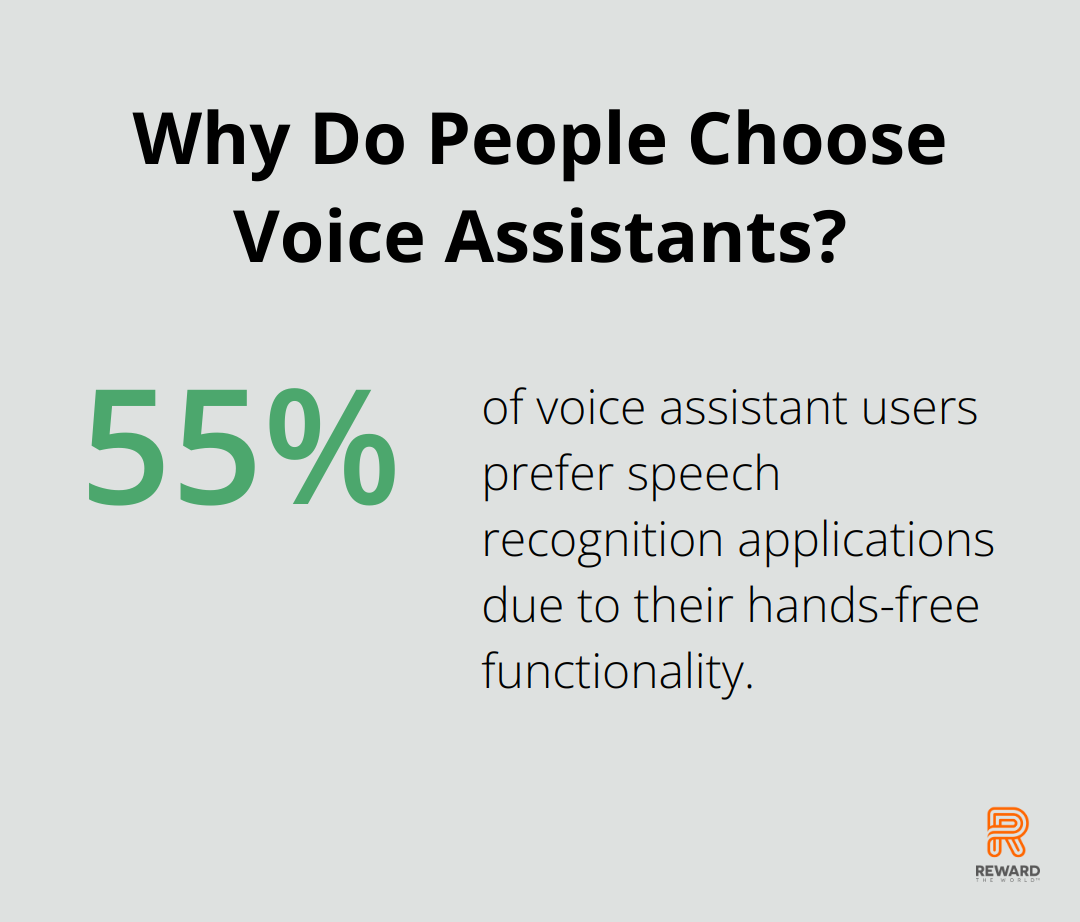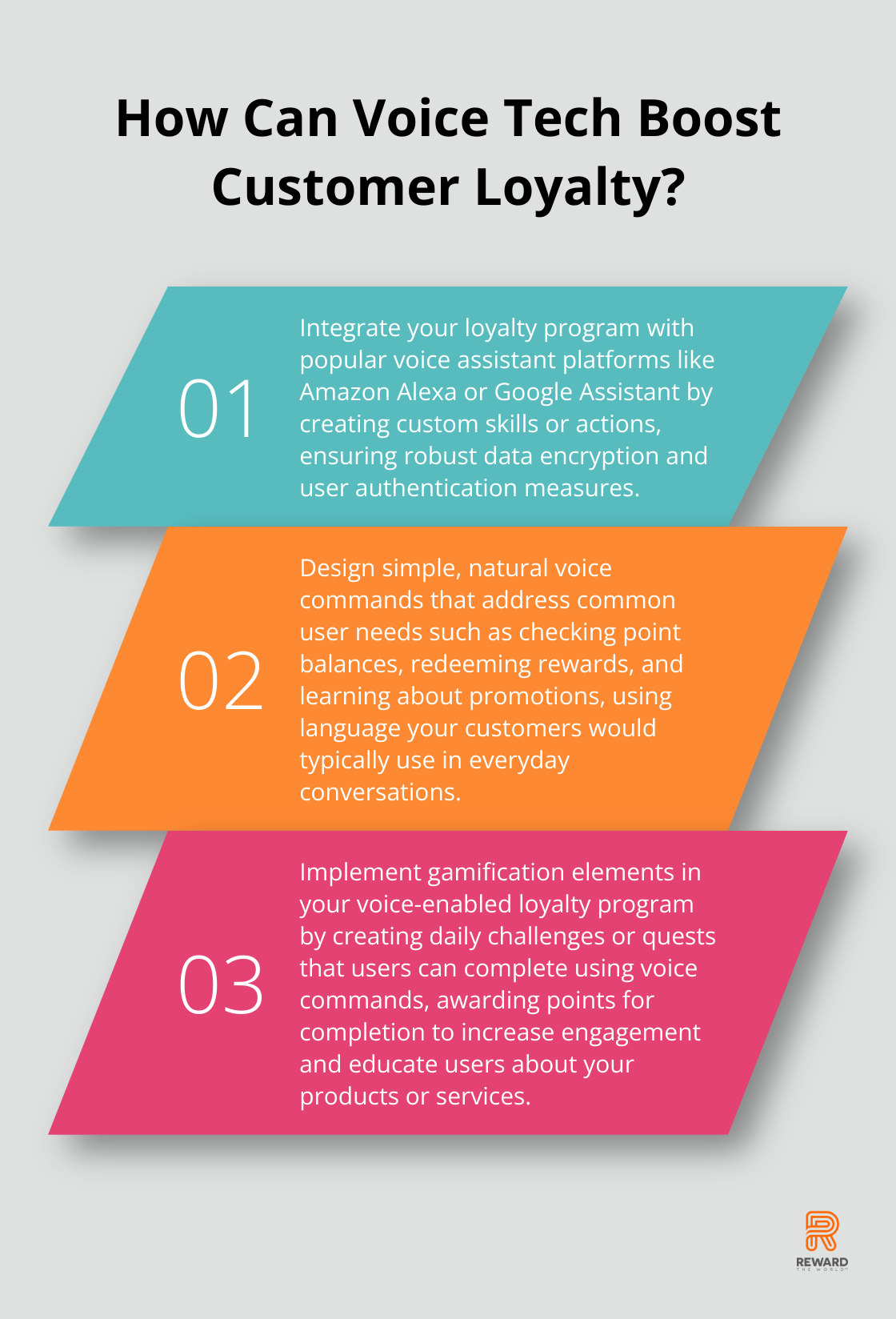
Smart speakers are revolutionizing how we interact with technology, and loyalty programs are no exception. At Reward the World, we’re excited about the potential of voice-activated rewards to transform customer engagement.
This blog post explores how businesses can integrate their loyalty programs with smart speakers, creating seamless and interactive experiences for their customers. We’ll cover everything from technical requirements to designing intuitive voice commands, helping you harness the power of voice technology for your loyalty initiatives.
How Smart Speakers Transform Loyalty Programs
The Voice-Activated Revolution
Smart speakers are rapidly transforming the landscape of customer engagement, with loyalty programs at the forefront of this revolution. The adoption of voice-activated devices has skyrocketed, with over 110 million virtual assistant users in the United States alone. This surge in popularity presents a golden opportunity for businesses to reimagine their loyalty programs.
Benefits of Voice-Enabled Rewards
Simplified User Experience
Integrating loyalty programs with voice technology offers numerous benefits. It dramatically simplifies the user experience. Customers can check their points balance, redeem rewards, or learn about new offers simply by asking their smart speaker. This frictionless interaction removes barriers to engagement and encourages more frequent program participation.
Enhanced Personalization
Voice-enabled loyalty programs provide a unique avenue for personalization. By analyzing voice patterns and user preferences, businesses can tailor recommendations and offers to individual customers. This level of customization can significantly boost customer satisfaction and loyalty.
Success Stories in Voice-Activated Loyalty
Several forward-thinking companies have already embraced voice-activated loyalty programs with impressive results:
- Starbucks allows customers to check their rewards balance and place orders through Amazon Alexa. This integration has led to over 31% of transactions now coming through mobile apps.
- Domino’s Pizza enables customers to place orders and track deliveries via voice commands. This feature has contributed to a boost in digital sales, showcasing the potential of voice technology in driving customer engagement and sales.
Navigating Implementation Challenges
While the benefits are clear, implementing voice-enabled loyalty programs comes with challenges:
Data Security and Privacy
Data security and privacy concerns are paramount, as voice interactions involve handling sensitive customer information. Businesses must ensure robust encryption and authentication protocols to protect user data.
Intuitive Voice Command Design
Designing intuitive voice commands that cover all possible user interactions requires careful planning and testing. It’s crucial to strike a balance between functionality and simplicity to avoid frustrating users with complex voice interactions.
68 percent of zillennials use voice technology for daily tasks, indicating a high adoption rate and a trend toward deeper engagement with voice technology. This underscores the immense potential of voice-enabled loyalty programs in today’s digital landscape.

As we move forward, the next section will explore the technical requirements for seamlessly integrating voice technology with loyalty programs, ensuring a smooth and secure user experience.
How to Set Up Voice Integration for Loyalty Programs
Selecting Your Voice Assistant Platform
The first step in voice integration for loyalty programs is to choose the right voice assistant platform. Amazon’s Alexa, Google’s Assistant, and Apple’s Siri all offer similar features and are accessible through speakers, phones, and wearables. Your choice should depend on your target audience’s preferences and the platform’s capabilities.

Consider your customers’ device usage when making your decision.
API Integration and Data Security
After you select a platform, you must integrate your loyalty program with the voice assistant’s API. This process involves the creation of custom skills or actions that allow the voice assistant to interact with your program.
Data security is a top priority during this integration. You must encrypt all data transmissions and implement robust authentication measures.
User Authentication Streamlining
User authentication protects customer data and ensures a seamless experience. Most voice assistants offer account linking features, which allow users to connect their loyalty program accounts to their voice assistant profiles.
You should implement multi-factor authentication for added security. This could include voice recognition technology, which can be used for identity authentication and fraud detection in call centers.
The goal is to balance security with user convenience. Complex authentication processes can deter users from engaging with your voice-enabled loyalty program.
Personalization and User Experience
Voice integration offers unique opportunities for personalization. You can tailor recommendations and offers to individual customers by analyzing voice patterns and user preferences. This level of customization can significantly boost customer satisfaction and loyalty.
Testing and Optimization
Before launch, conduct thorough testing of your voice-enabled loyalty program. Test various scenarios and user interactions to ensure a smooth experience. After launch, continuously gather user feedback and analyze usage data to optimize the system.
The next step in creating a successful voice-enabled loyalty program is to design intuitive voice experiences that keep your customers engaged. Let’s explore how to craft these experiences in the following section.
How to Create Engaging Voice Commands for Loyalty Programs
Keep It Simple and Natural
When you design voice commands, simplicity is key. Use natural language that your customers would typically use in everyday conversations. For example, instead of “Initiate point balance inquiry,” opt for “What’s my points balance?” or “How many points do I have?”

A study found that 55% of VA users prefer speech recognition applications due to their hands-free functionality. This preference underscores the importance of natural language in voice-enabled loyalty programs.
Anticipate User Intent
Think about the most common actions your customers might want to perform and create voice commands that directly address these needs. Some essential commands to consider include:
- Checking point balances
- Redeeming rewards
- Learning about current promotions
- Tracking order status
- Locating nearby stores or service centers
Personalize the Experience
Use user data to provide personalized responses and recommendations. For instance, if a customer frequently redeems rewards for coffee, your voice assistant could proactively suggest, “Based on your preferences, you might like our new caramel latte reward. Would you like to hear more about it?”
A recent survey of 19,000 consumers from 12 countries offers fresh insight into consumers’ experiences in making purchasing decisions across categories. This highlights the importance of personalization in loyalty programs (including voice-enabled ones).
Incorporate Gamification Elements
Gamification can make your voice-enabled loyalty program more engaging and fun. Try to implement challenges or quests that users can complete using voice commands. For example:
“Hey [Assistant], start my daily loyalty challenge!”
The assistant could then guide the user through a series of tasks or questions, awarding points for completion. This approach not only increases engagement but also educates users about your products or services in an interactive way.
Customer loyalty gamification transforms traditional loyalty programs into engaging, interactive experiences. It applies game-like elements to non-game contexts, demonstrating the potential of incorporating game-like elements into voice-enabled loyalty programs.
Provide Clear Feedback and Confirmation
Always confirm actions taken by users to avoid confusion and build trust. For instance, after a user redeems points for a reward, the voice assistant should clearly state:
“Great! I’ve redeemed 500 points for your $5 gift card. It will be sent to your registered email address within the next 10 minutes.”
This confirmation reassures users that their action was successful and sets clear expectations for next steps.
Final Thoughts
Voice-activated rewards revolutionize loyalty programs, offering unparalleled convenience and engagement for customers. Smart speaker integration creates seamless, personalized experiences that drive participation and foster long-term brand loyalty. Businesses must address data security concerns and design intuitive voice commands to overcome implementation challenges.

We expect voice-enabled loyalty programs to become more sophisticated with advanced AI enabling natural conversations and predictive recommendations. The integration of IoT devices will create immersive loyalty experiences, while biometric voice recognition will enhance security and personalization. Businesses should select the right voice assistant platform, focus on API integration, and prioritize data security measures to succeed in this space.
Reward the World offers a powerful solution for businesses looking to elevate their loyalty programs through voice technology. Our global incentives platform serves millions of users and provides instant reward delivery across various categories. Voice-activated rewards promise to create deeper connections between brands and customers, driving engagement and loyalty in innovative ways.
